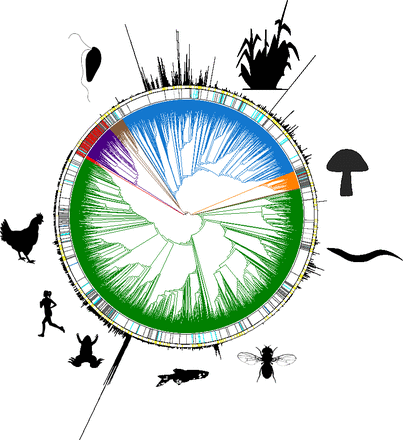May 28, 2018 – If our plan as humans is to survive the demise of Earth then it is likely we will want to bring along with us our fellow travelers, the rest of life on the planet. This might prove difficult in the confines of a spaceship headed to a distant exoplanet. But if we could sequence every living thing, capturing every strand of DNA, then with a future technology we might be able to resurrect all the life on our planet and reproduce it on some distant world.
These were my immediate thoughts as I began to read about the Earth BioGenome Project, (EBP)a $4.7 billion US, 10-year project, to sequence, catalog, and analyze every living eukaryotic life form on our planet. That includes every plant and animal but not bacteria and archaea. The latter two are being sequenced since 2010 under a different publicly funded program called the Earth Microbiome Project (EMP).
Why else would we be sequencing all life here?
It could be because climate change and our human activity on the planet is leading to the extinction of so many species that conservationists and scientists fear we will lose them for good. It could be because the remaining wild spaces are insufficient to support the biodiversity that is still with us. It could be because we don’t want to lose the potential benefits we could derive from the fauna and flora we preserve through their DNA record. But I can’t help but return to the scenario of a future interplanetary venture which takes our descendants over centuries to some distant world which we then terraform and using synthetic biology, populate with species recreated from DNA records kept in data storage.
Both the EBP and EMP are projects in a hurry because our Earth is in the midst of the sixth great extinction event for life on the planet. The evidence is clear. Sources like the Living Planet Index, a measure of species and habitat destruction, have recorded a 58% decline in vertebrate populations between 1970 and 2012. The International Union for Conservation of Nature has estimated that of 80,000 species surveyed, approximately 23,000 are nearing extinction. By 2050 we may witness the loss of 50% of our planet’s species from human activity. Consider the concern of farmers globally should bee populations continue to plummet. Without these pollinators, many crops we depend on for food will fail.
In the EBP description that appeared in the April 23, 2018 publication of the Proceedings of the National Academy of Sciences of the United States of America (PNAS), the authors not only discuss the threat of extinction, but also the “unimaginable biological secrets” that will be uncovered in the genomes of millions of the creatures and plants that inhabit our world. They refer to the “dark matter” of biology as critical to “unlocking the potential for sustaining planetary ecosystems.”
They also talk about what will be lost to pharmacology, should we not have a genetic record of every living thing and cite recent clinical trials where drugs being used were derived from 25 different marine species. Discovering medicines that can cure cancer or genes we share with other species that lie dormant in us that if switched on could help us fight disease, is something we cannot afford to lose. In our mapping of other species, we may even find the key to help us reduce greenhouse gas emissions and rebalance carbon on the planet.
Sequencing technology which cost billions of dollars two decades ago is now accessible to us for hundreds today. And that cost continues to drop making the two projects, the EBP and EMP financially feasible.
What are some of the anticipated outcomes?
- a better understanding of biology and Earth ecosystems.
- a better understanding of the role evolution has played and the fundamental laws of evolutionary processes.
- the discovery of new species.
- an understanding of our influence on existing biodiversity.
- the ability to develop evidence-based conservation plans for endangered species.
- the creation of a DNA repository that will ultimately give humans the ability to restore damaged or depleted ecosystems.
- new medicines, better ways to control pandemics, novel biomaterials, biochemicals and new energy sources.















